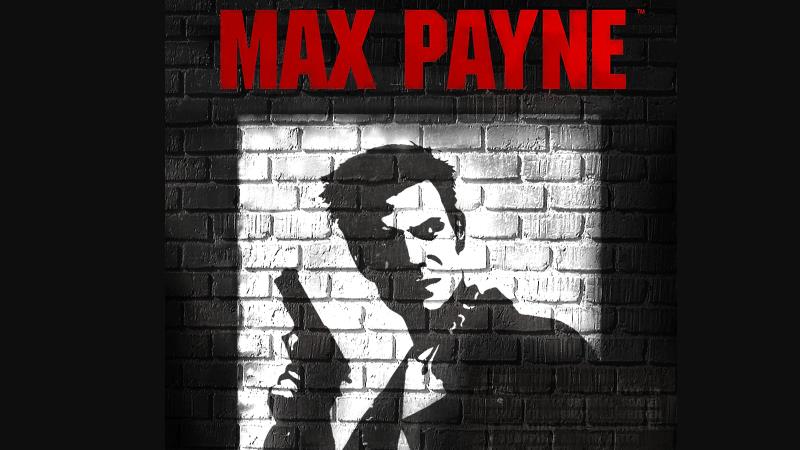
For this Max Payne review, the Xbox version will be covered after news of a remake. For a third-person shooter from 2001, it is expected that some aspects of this neo-noir will show signs of age. There are undoubtedly some areas where Remedy can improve upon Max Payne in the remake; but what exactly?
The visuals will be completely overhauled and will use the developer’s Northlight Engine. Titles like Quantum Break, Control, and the Alan Wake remake looked incredible and have some of the best playability for hyperrealistic action games. However, before Northlight and even before the original Alan Wake; there was just Max Payne.
While Max Payne may be over 20 years old, it still manages to be a riveting experience. What is it about Max’s first game that holds up? What parts of Max Payne show its age? Where can it be improved and how does it fare on a Series S via backward compatibility? Find out in this Max Payne review!
Max Payne
Developer: Remedy Entertainment/neo Software
Publisher: Rockstar Games
Platforms: Microsoft Windows, Mac iOS, Gameboy Advance, Android, PlayStation 2, PlayStation 4, Xbox (reviewed via Xbox Series X|S backward compatibility)
Release Date: July 23, 2001
Players: 1
Price: $14.99 USD
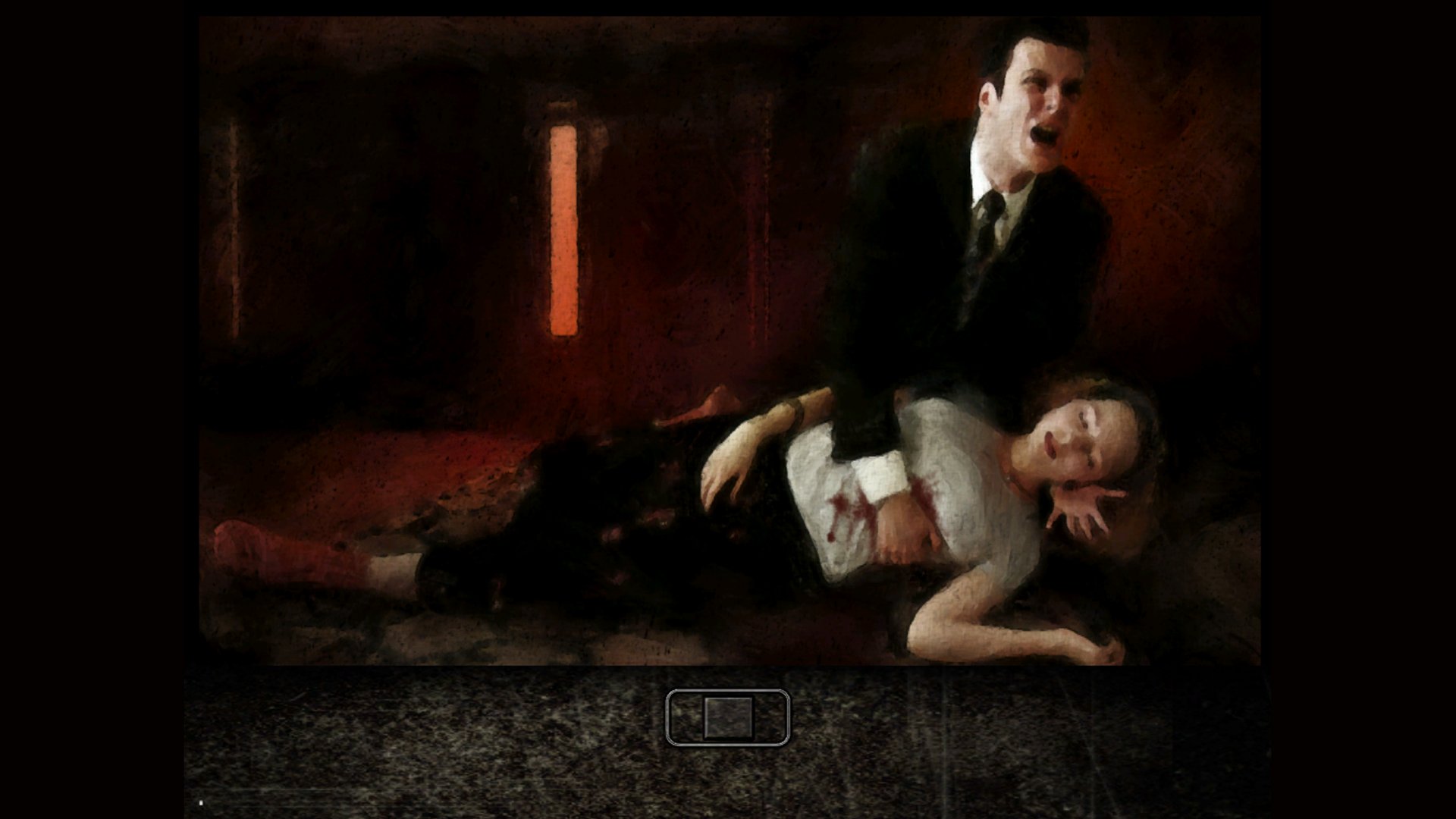
Max has a problem. He is an up-and-coming New York police officer whose wife and baby have been murdered. No longer part of the NYPD, he not only seeks revenge on his family’s killer but also clears his name for being framed for the murder of a DEA agent. The deeper Max goes, the more entangled he gets with a conspiracy revolving around an enigmatic drug called, “Valkyr”.
Max’s hallucinatory odyssey into the New York underbelly of the Russian mob and Norse mythological symbolism unravels a pharmaceutical conspiracy. More and more, the mysteries compound on themselves, and his journey takes on a spiritual quality where he learns about himself and how his family was tied to this terrible plot.
Max Payne is about a man who could not be reduced. His nightmares bleed into the real world and even then, his internal monologue makes a dry and witty remark about the horrible imagery. James McCaffery’s narration is flawless. The man truly embodies the character and nails the classic, hardboiled detective drawl. Every line he delivers commands attention.
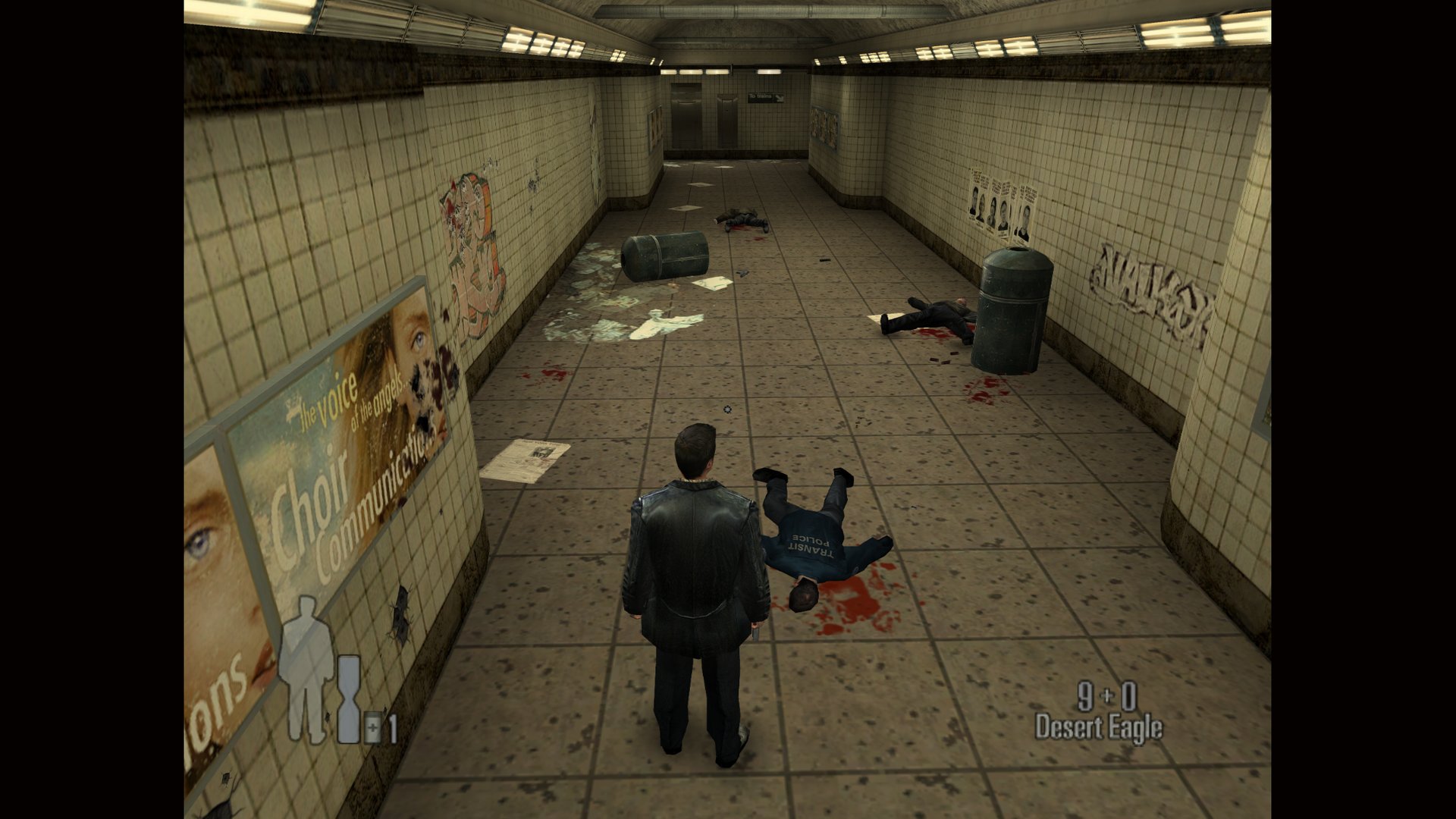
Max Payne‘s gameplay was not a pioneer in third-person shooting, but it was one of the most refined examples in the genre at its time. The camera placement is high above Max, giving the player palpable spatial awareness. There is never any mistake about how far an enemy is or where Max is about everything in the environment.
Controls rely on the now standard, twin-stick first-person shooter configuration. At the time, this was novel and for newcomers today, this will feel very natural and timeless while navigating and orientating oneself to the locations. The right stick movement and aiming are smooth, like a release within the last five years.
Sadly, some aspects of Max Payne do show its age. Max’s movement is a clear sign of it being a PC game from 2001 being ported to the original Xbox. Running is all or nothing; Max goes from a stationary position to a full-on sprint and there is nothing in between. This makes controlling him feel very jerky and it is not possible to make subtle, smooth motions with an analog stick.
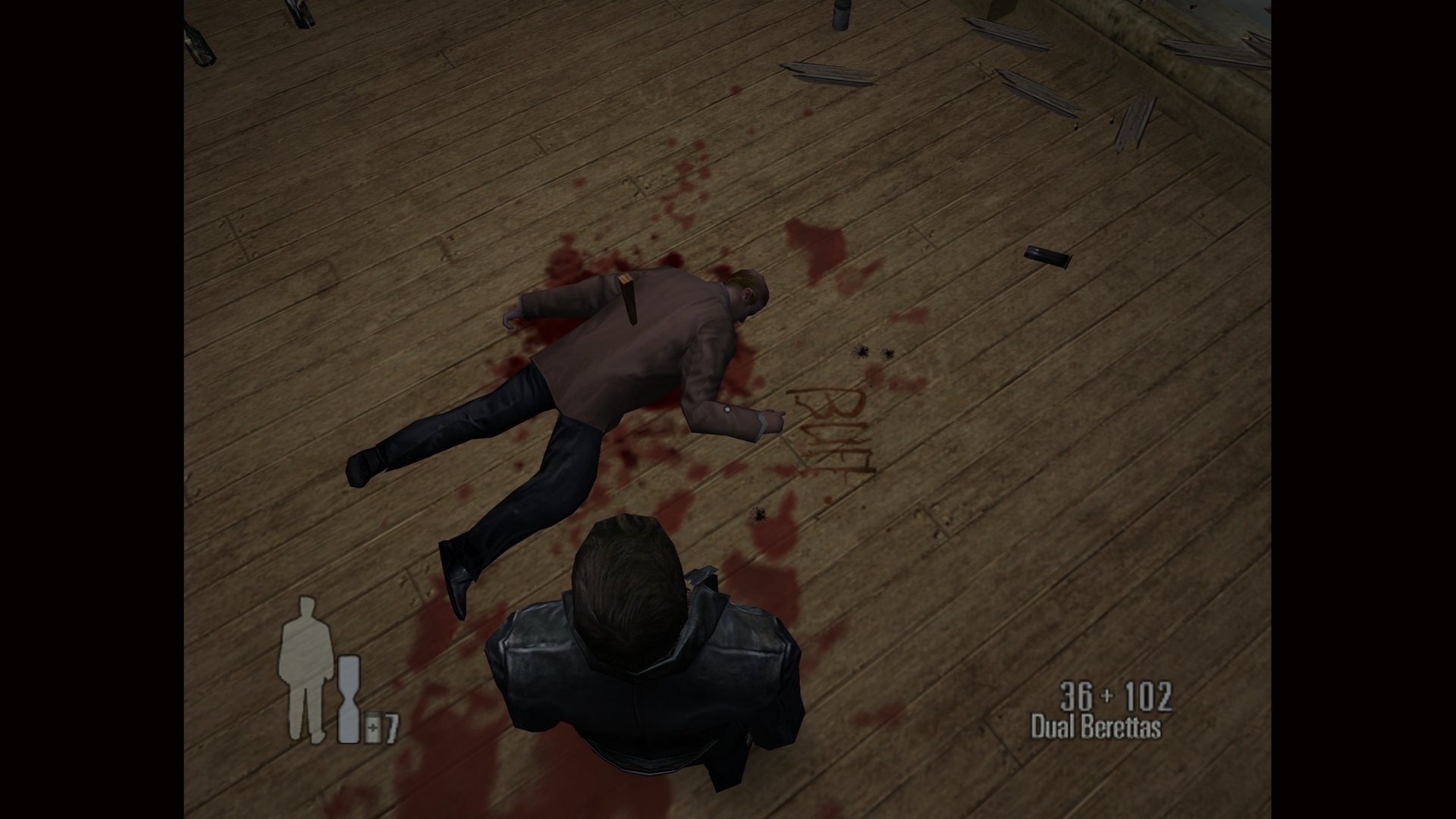
It can take some time to adjust to this, but it is easily the one aspect of the controls that has aged poorly. Super Mario 64 was a 3D game from 1996 that made full use of an analog stick and by 2001, it was already a standard for all games moving forward on sixth-generation consoles to have smooth 3D movement. Even for its time, Max’s movement was behind the curve.
While the timing is fluid, much of the shooting has a soft-lock mechanic that can sometimes get in the way. Max Payne was originally a PC game that relied on pixel-precise mouse-look aiming, which makes shooting very easy. For a 2001 Xbox game, this may have been considered too taxing for players at the time, so now Max merely has to look in the direction of threats to blow them away.
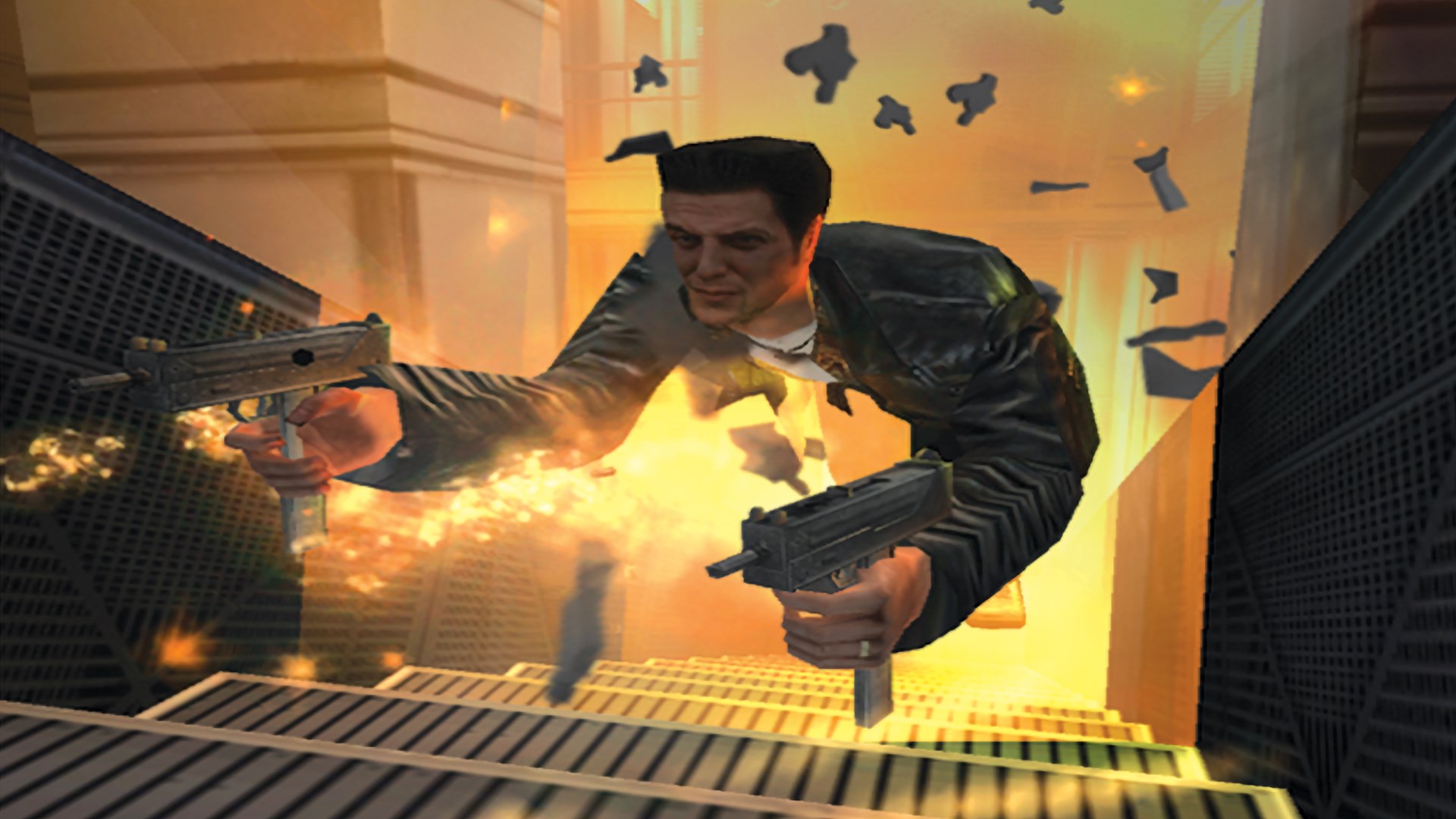
This aggressive aim-assist is meant to make the action more fluid so players can focus on dodging and looking more stylish while going into Max Payne‘s biggest selling point: bullet time. The Matrix was one of those big watershed movie moments that inspired a ton of people; Remedy included. It depicted a stylish way to incorporate slow-mo with gunplay and Max Payne embraces it.
Max can’t take too many hits and during normal gunplay, gunfire is hitscan. While activating the slow-mo, bullets are projectile-based and can be physically avoided. A large part of the strategy in Max Payne is managing Max’s bullet-time meter and filling it up with kills so players can rely on slow-mo as much as possible.
Shoot-outs have an ebb and flow to them as players frantically avoid hit-scan fire and try to gain more bullet time by landing any shot they can while scrambling for some sweet painkillers. Over 20 years later, Max Payne‘s violence still packs a punch and it is owed to the excellent sound design of bullets ripping into flesh and shattering bone.
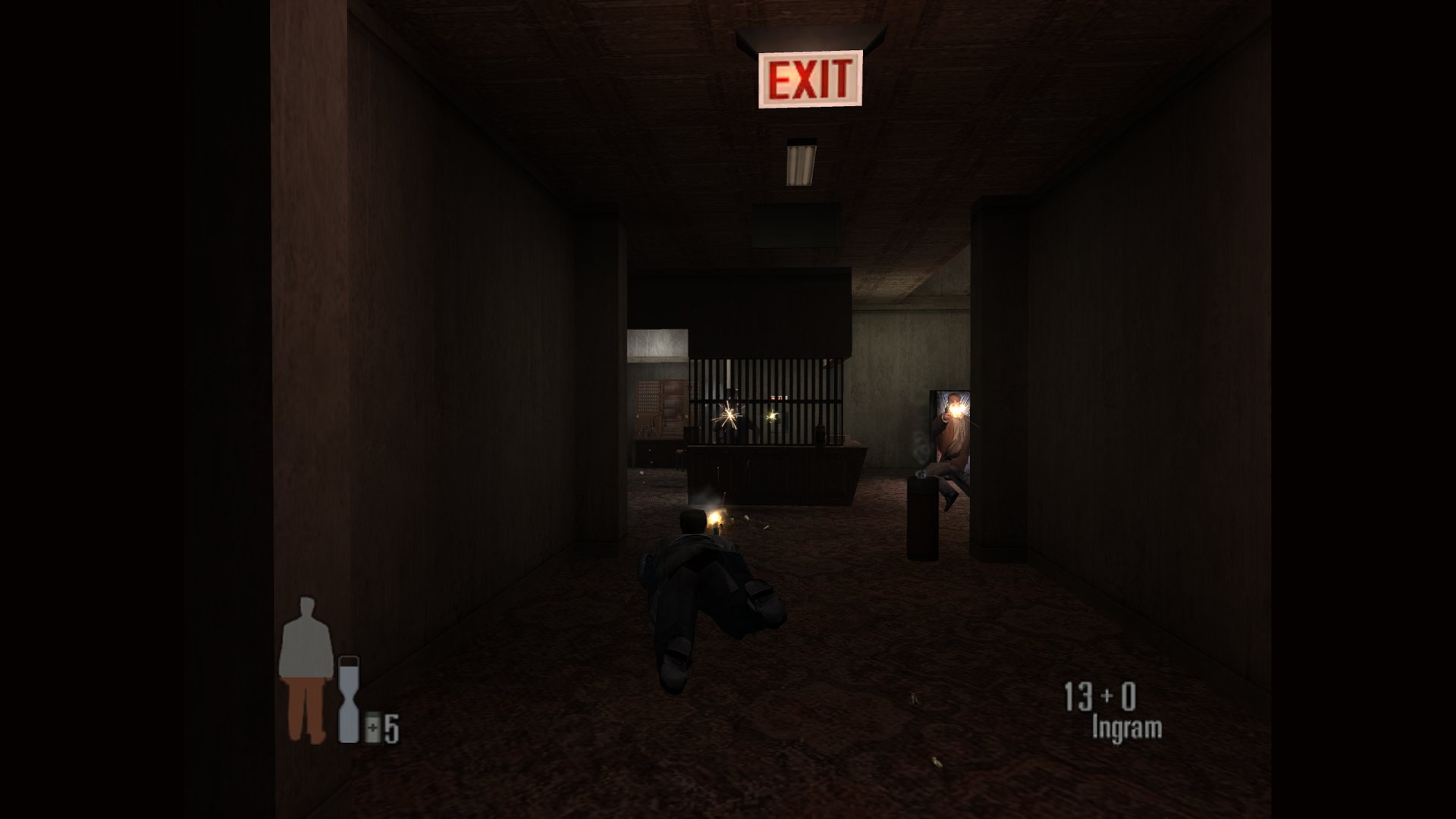
When Max is on the wrong end of a bullet, reloading is the fastest it’s ever been thanks to the backward compatibility of modern Xbox consoles. Not only are retries quick; the checkpoints are liberally placed due to the compact yet dense levels accounting for the 2000’s era technical limitations.
The pace of the action is constantly rising with Max facing more absurd odds with every new area which is bookended with amusing comic book-style cutscenes. Max Payne was art overcoming adversity, so the developers took it upon themselves to play out most of the characters, with the director himself playing Max.
There is a lot of charm in having Sam Lake play Max Payne. The man is very obviously not a hardened former NY cop and has very odd choices of facial expressions. This adds to the surreal quest that culminates in Max Payne‘s story, especially in the playable space-bending nightmare sections that would become a staple for Remedy’s games.
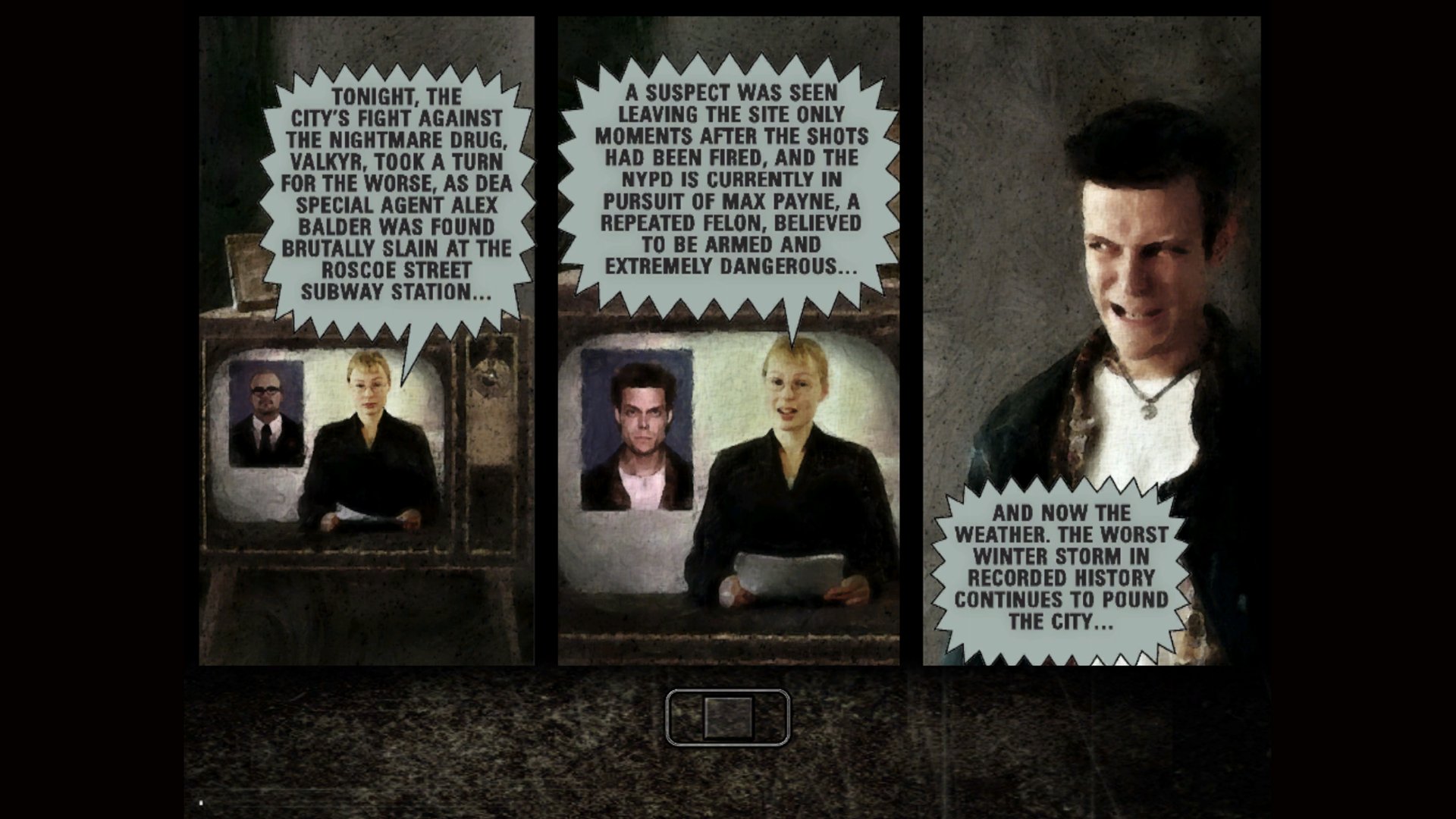
The in-game cutscenes that use character models show just how limited Remedy was at the time. Most of the shots will be framed to avoid showing the speaker’s face. This was likely due to the lack of facial rigging or animation. No matter what, Max will always have his trademarked squinting face where he looks like he is trying not to laugh.
Despite all the limitations of 2000s-era specs, Max Payne is still a righteous action game that is enjoyable for its pacing and entertaining scenarios. Some parts late in the game are a bit cheap with how enemies are placed around corners, but retrying is painless. At worst, the lack of nuance in the movement may turn off some modern gamers.
Max Payne was reviewed on Xbox Series S using a copy purchased by Nichegamer. You can find additional information about Niche Gamer’s review/ethics policy here. Max Payne has been available for PlayStation 2, PlayStation 4, Steam, Gameboy Advance, Android, Mac iOS, and Xbox (also Xbox One and Xbox Series X|S via backward compatibility).